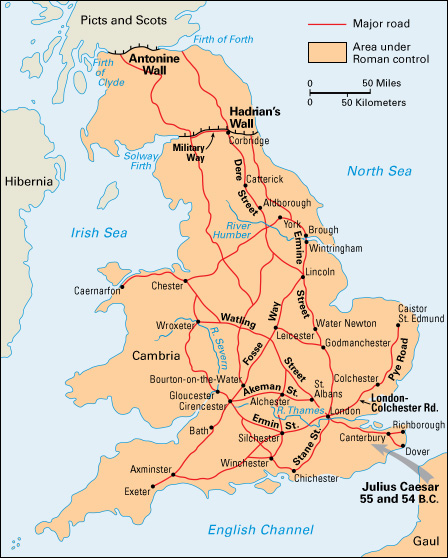Hadrian’s Wall was a great stone wall begun by the Roman emperor Hadrian in A.D. 122. It stretched across what is now northern England between Solway Firth and the mouth of the River Tyne. The wall followed the modern route that links the towns of Carlisle , in the west, and Newcastle upon Tyne , in the east. It marked the northern boundary of Roman Britain and served as a symbol of Roman power. The wall helped prevent attacks by northern tribes. It also acted as a customs post by controlling immigration, smuggling, and nomadic movements in and out of Roman territory.

It took at least six years to build Hadrian’s Wall. Parts of the wall originally were built with turf, but the final structure was a wall of stone. The Romans built 15 large forts into the wall. Additional forts protected positions a few miles to the north. There was a small fortified gateway called a milecastle at every Roman mile (about 0.9 mile or 1.5 kilometers) along the wall. Evenly spaced between each pair of milecastles were two stone watchtowers. To the south, a military road ran parallel with the length of the wall. A ditch known as the vallum protected the road.
Hadrian’s successor, the emperor Antoninus Pius , initially abandoned Hadrian’s Wall. He built the Antonine Wall farther north in the A.D. 140’s. But the Romans later were forced to retreat to Hadrian’s Wall. Sections of Hadrian’s Wall continued to be used until the 400’s, after the Romans had left Britain. Long stretches of the wall remain. In 1987, the United Nations Educational, Scientific and Cultural Organization (UNESCO) declared the wall a World Heritage Site—that is, an area of unique natural or cultural importance.

